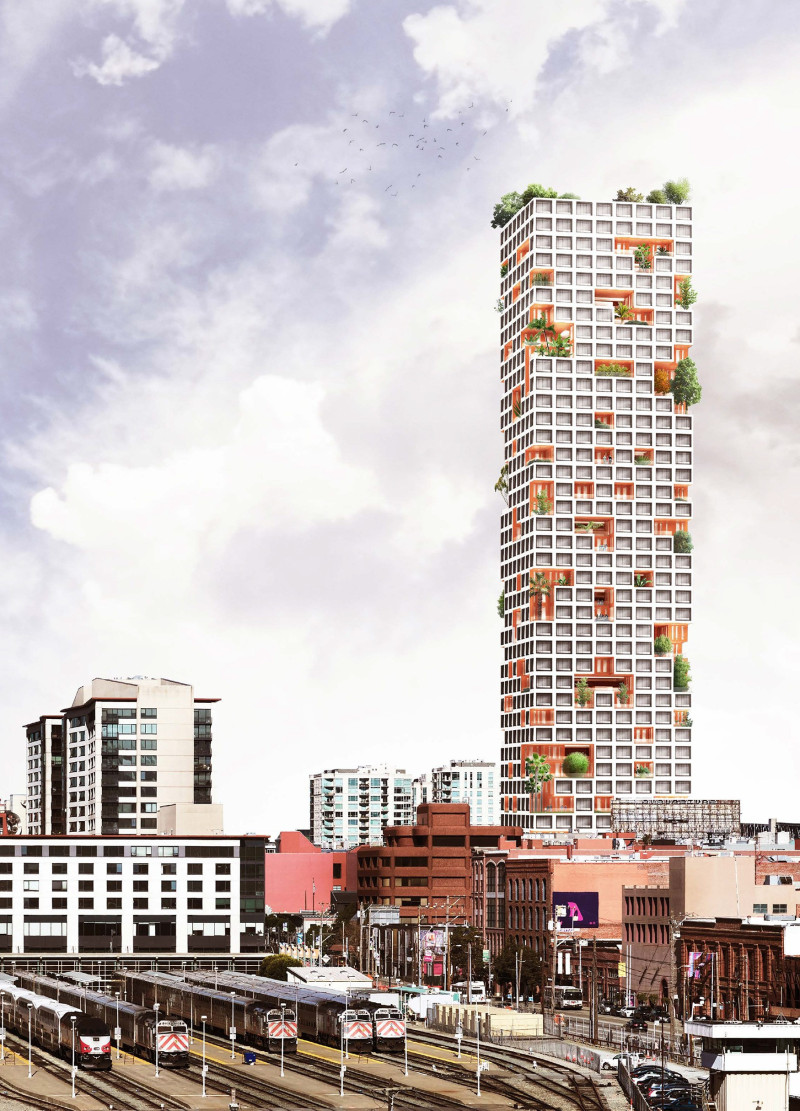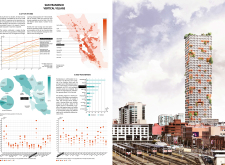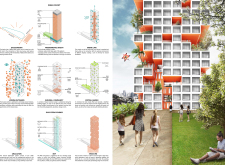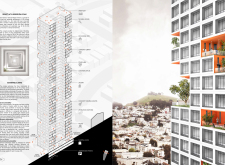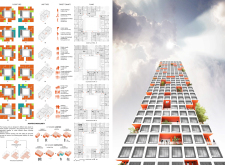5 key facts about this project
The San Francisco Vertical Village is a multi-unit residential project located at the intersection of San Jose Avenue and Geneva Avenue in San Francisco. This architectural design addresses the pressing issue of affordable housing, catering specifically to the diverse needs of the local community. The project combines various housing typologies within a single vertical structure, promoting both efficiency in space and opportunities for communal living.
The design incorporates approximately 259 housing units organized into flexible configurations, which include accommodations for individuals, families, and seniors. This modular design maximizes available space and allows for adaptability as demographic needs change, supporting the concept of a living environment that evolves over time.
Unique Design Approaches
One distinctive aspect of the San Francisco Vertical Village is its emphasis on sustainability. The building employs recycled aluminum for its facades and incorporates vertical gardens that not only enhance aesthetic appeal but also contribute to urban agriculture. This approach supports local food initiatives and promotes environmental responsibility within the urban landscape.
The use of natural ventilation strategies throughout the building minimizes reliance on artificial climate control systems, leading to reduced energy consumption. The incorporation of water harvesting systems further emphasizes sustainability, allowing the collection and reuse of rainwater for irrigation purposes. These features position the project as a model for eco-conscious urban development.
Integration of Shared Spaces
The project prioritizes community interaction through the inclusion of shared amenities. Coworking spaces and exercise facilities foster social engagement among residents while promoting an active lifestyle. Community farming facilities encourage residents to participate in growing their own food, strengthening community ties.
The architectural design also integrates communal areas that facilitate interaction among residents, thereby enhancing the living experience. These shared spaces are strategically placed to optimize accessibility while promoting a sense of belonging in a densely populated environment.
For a comprehensive view of the architectural plans, sections, and designs that outline the nuances of this project, readers are encouraged to explore the project presentation. Delving into these architectural ideas can provide further insights into the innovative approaches that define the San Francisco Vertical Village.


